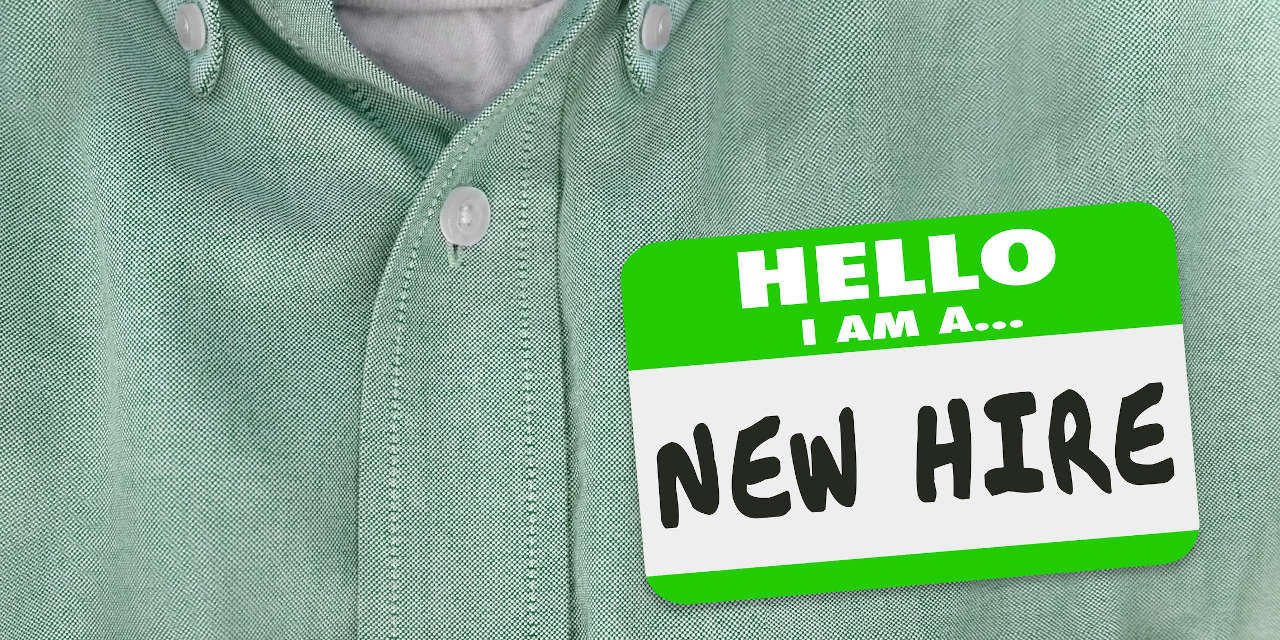By Pam McDonald
Through her company Drive, Denise Boudreau-Scott assists long-term care communities to establish practices and cultures that help attract and retain staff. Denise tells Foresight Radio Producer Pam McDonald that the onboarding process sets the stage. “Be intentional,” she recommends. “What really counts is the feeling the new hire gets with each interaction. Make sure the feeling that’s coming across is the feeling you want it to be.” Below are lightly edited takeaways from the interview. You can listen to the entire episode here. Be sure to download a copy of the eBook, Ultimate Recruitment: 65 Ways for Attracting, Onboarding & Keeping the Best from the Drive website, CultureOutcomes.com.
My company, Drive, helps with organizational culture, which simply means “how do we work around here?” That’s become incredibly important as employers really struggle to hire new people and to retain them. Why would someone want to go work for your organization and not another one in your town? That’s what we help organizations with.
Painting A Picture for New Hires
I think about onboarding as the process of creating this welcome for somebody that’s coming to your organization. Sharing with them the expectations in a wonderful way, painting this picture of what their work will be, their contribution to your organization, and making sure it’s an experience they’re going to go home and tell their friends, “You should work here too.” It sets them up for great success for many years in your organization.
I always think you’ve done a great job welcoming a new employee when they’re posting it on social media and saying, “I can’t believe what my new workplace did.“ Here I’m going to share a bunch of ideas for onboarding that puts the word out about what it’s like to work there.
Success might only be a week if I’ve had a terrible onboarding experience. And this happens all the time. We hear it in focus groups we do with organizations measuring their culture. We see it pop up. But there are times that people are desperate, so immediately someone’s first day they’re put right to work. And the person might not come back that second day.
We have times that people go to their orientation, doing their paperwork and so forth. That experience is one that they’re like, “I’m out. I don’t want to work here.” They don’t come back. So, we need to think about how we are setting this person up for success. Not just getting them ready quickly, but really creating an opportunity to say, “This person’s going to be with us, hopefully, for years, so how can we start them off on the right foot to make that happen?”
Don’t Turn New Hires Off
People have lots going on, they’re busy, so they don’t always think about these things [structuring the orientation]. But I have sat in numerous orientations, and I’ll tell you an example. Drive has one client I just love. They’re so friendly, they’re so warm. That’s the kind of place it is. Yet, when I sat in on their orientation, they recited thing after thing that would get you fired.
Instead, you can start with the feeling that’s coming across. Is it what you want it to be? So, if you want teamwork, if you want good communication, and I walk into my first day on the job and say, “Hi, I’m Denise. I’m here to go work as a pot washer” and the receptionist says, “I don’t know who you are.” Or “I thought you were starting next Tuesday.” That’s not great teamwork, or great communication. So, what is that feeling that you get?
Or maybe I was referred by Pam and I show up on day one and there’s Pam waiting for me saying, “Denise, I’m so glad you’re here.” So, Pam feels like a million bucks, and I feel like a million bucks. I’m off to a good start.
Which Employees Would You Clone?
In that same organization, we were doing some focus groups and asked them to name for us their A-players. They gave us 45 people to talk to. When we asked how did you come to work here, 95% of those people said a friend or a family member had referred them. When we’re looking at ways to recruit people, we have to tap into the people already working in our organization. What gets people referring more friends is Pam feels like a million bucks because she’s now greeted by Denise, someone who’s kept her in the loop about showing up at work on Tuesday. You know what’s happening, you feel really good. You’re going to refer someone else.
Increasing the referral bonus is not really the difference-maker. The difference-maker is me feeling important and special because I’ve referred my friend and they wrapped that into their onboarding process.
Do You Even Do the Little Things?
Look at, once again, how does this make somebody feel? There’re 20 other places that would die to hire me in this town. Why would I work at a place where I don’t feel very important or wanted?
Another thing we found interesting in a few focus groups was, “You know, when I started here, my name was on the schedule from the first day.” And that makes them feel so good. It’s such a simple thing. I never would have thought it would be anything important until I heard it mentioned multiple times. How simple, right? I start on day one, my name is on the schedule, and I know what days I’m going to be working. So how does that make me feel? Important. If I’m not on the schedule, I can feel forgotten, invisible. Not what we want people to feel. So, something as simple as having someone’s name on the schedule makes a difference. And, are we introducing them to people or are we just throwing them to the wolves when they get there?
What Might Motivate Bullying
I hear a lot about bullying of new employees. Someone said to me, “You know, we have a staff person we know bullies the new employees. In fact, we have one employee we know has chased out about seven new people.” So unacceptable, right? So why would we put up with that? I was told, “We can’t afford to lose that person.” And then I said, “Do you want to exchange money? I’ll give you 10 bucks and you can give me 70 back.”
We need to treat any employee the same way we would treat a new resident moving in. You would never accept a staff member treating a resident in any kind of verbally abusive way. And yet we accept it with staff all the time. It’s something that needs to change. People are tired, they’re stressed out. I don’t want to make light of that, but we need to look at what we can do to support our front line.
If somebody is getting a lot of overtime and you’re newly hired, you’re taking away their overtime. So sometimes bullying is motivated by financial reasons. Sometimes it’s because the new kid on the block is the easiest person I can get away with treating badly. Maybe, when I came in, I got bullied. A lot of physicians will tell you, “Listen, I got abused when I was new, when I was doing my residency, therefore, I abuse the new people.” That is the culture or how we work around here.
It was never right, but adding to the problem is the fact that you can’t replace these people as easily as you used to. You’re already throwing money out the door and making the resident experience worse with staff turnover. But now on top of it, you can’t replace these people and you’re paying a ton of money in agency fees or overtime to replace them. So, those are some of the reasons it might happen.
The 11-Star Experience to Design Onboarding
I’ll tell you one exercise we love to take people through. It’s called the 11-Star Experience and it’s what Airbnb credits for how it expanded so quickly and did so well. If you start by describing a five-star experience it’s like, I get to my Airbnb and somebody lets me in within 10 minutes. The place is clean and it’s fine. Okay.
What’s a six-star experience? They’re actually there when I arrive. They tour me around. What’s a seven-star experience? And you keep notching it up. Maybe with a nine-star experience, my favorite bottle of wine is on the table. The music I love is playing. They’ve made reservations at this restaurant it’s really hard to get in.
What’s an 11-star experience? I arrive in town and get off the plane. It’s like the Beatles have arrived. Everyone’s screaming and cheering my name. I arrive at the Airbnb. Elon Musk is there trying to take me away into space. It’s ridiculous; 11-stars is completely, utterly ridiculous. But every time I’ve done this exercise for orientation and onboarding, we discover novel ways to welcome our new people. The 11-star experience might be kind of crazy, but you can back up to a point where you say, “Now, that’s possible.”
Adding a Wow to Onboarding
Another organization, Rowntree Gardens in California, is a fabulous place. They did this exercise and realized they wanted to create a wow experience. An easy way to do that is through surprise. So, at the end of the day, they surprise people with a meal they take home to their families. They say, “A first day is so stressful, you’re probably exhausted. Here’s dinner for your family.” And give them dinner for themselves and whoever else lives in their household.
Don’t give a $20 gift card because that’s a very different feeling. You want them so proud they take a picture and say, “Look what my new job just sent me home with on my first day.” Dining services can have a lot of fun with this. They feel proud. And this example is so organic to senior living. We serve meals all the time so to give somebody a meal is another way of solidifying what it is we do. And that’s from the 11-Star Experience.
A Resource for Attracting and Hiring Staff
I have a book called Ultimate Recruitment and Retention: 65 Ways for Attracting and Onboarding and Keeping the Best on our website at CultureOutcomes.com. It’s free of charge because we want everyone to have it. There are so many ideas and it’s 44 pages total. There’s a first-day scorch card, so you can assess your first day on the job. There’s an interviewer training.
There is a way to evaluate your application process. Go online and try to apply for a job. What’s that like? There’s a whole checklist of Orientation Must Do’s, as well as first impressions and special moments. You can rate yourself and see how you are doing and then there are 65 ideas to help you with raising those scores.
I would love to see the new employee experience pushed out so it’s much longer. That doesn’t mean people are not working, but can we bring them on and, instead of immediately giving them six tables to serve, could they have three residents or two tables to start? Spread it out. I would love to see the process where I’m learning about the organization extended over the course of a year with somebody checking in with me.
Are There Patterns to Employee Exits?
I’m a nerd about data. I love numbers, so if you’re working on staff attraction and retention, it really helps to know what you’re starting with, to have a baseline. So, what is your 30-day turnover? What is your 90-day turnover? Find out what’s happening? Why would people be leaving during that time period?
Another organization we worked with has 60-something nursing homes. They lost their highest number of chefs after 10 days. Why? Might I be hiring people that have never worked in this field before and had no idea there were all these regulations? Might the experience of working be one like they’ve never had before? Really check in with them. With data, we can do something about it.
How Culture Spreads
The current employee wants to tell the new employee about their experiences. That’s how you build a relationship, right? That’s how we build trust. So, I always recommend existing staff ask new hires something like “how’d you wind up working in health care?” Then listen to their story. Or you might share, “Oh, I was a caregiver for my grandmother and that’s how I wound up doing this work. How did you wind up in this work?” Everyone’s going to have their own unique story.
And now new hires and prospects realize there’s growth in this organization. And I am getting the opportunity to say what I dream of for my future. And some of these people have never been asked those questions.
Before new people come in, you might say to another staff person, “Pam, you have such an incredible story about how you’ve grown in this organization. Denise is starting next week. I’d love for you to just tell a little bit about your journey.” Then she gets a sense of what opportunities there are in this field.
Does Everything Point to the Feeling You Want New Hires to Have?
Look at your whole operation for that feeling that you want people to have. People are really struggling with recruitment and hiring. If you want people to feel that your community is a compassionate place to work ask, does everything point to that? The onboarding, your ads, your interview questions? When you’re hiring, does all of that make people feel valued?
I had a night shift employee in a focus group once — who was working on her nursing assistant certification — tell me that her supervisor said, “This is Denise. She’s going to be orientating with you” but that employee looked at the new hire and said, “No, I’m not orienting her”, then walked away. The new hire told me, “I’m going back to work at Burger King.” True story. And this poor woman had been trying to get her certification, studying, and she said, “I’m just better off working at Burger King.”
It’s the intent behind all of this, for the new employee and for your current people. How are we making people feel? Am I feeling important or am I feeling sort of invisible, like an afterthought?
You can start to fix this by just doing one little piece at a time. Sit in your orientation. See what new hires experience in that first hour. And start with a little piece. You don’t have to tackle it all at once.







